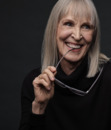Sandra Gulland's Blog, page 28
April 4, 2012
Wise at fourteen.
On my last post, a reader commented:
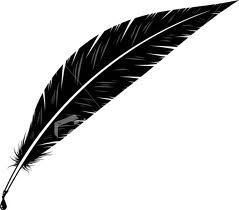
"… my fourteen-year-old read your first Josephine B. book for a Language Arts presentation, and impressed both her teacher and myself with her selection of Josephine's question: "Who am I?" to explore the broader socio-political themes of the book. She learned a tremendous amount from reading it, and I think found it fascinating to read about a young woman close to her age in such a different time and setting."
I'm impressed!
Teachers and students among you: have you used historical fiction in class? And if so, in what ways, and with what results?
March 30, 2012
Am I a disregarded entity? Further adventures in e-book publishing …
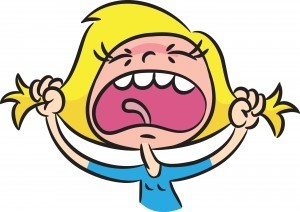
Since sending off the sixth draft of The Next Novel to my publisher, I've been tackling what needs to be done to get my e-books launched.
Expanding the website
Yesterday was a big day, setting up website pages for each book. (Here's the "catalogue page" so far. I have one page yet to set up, the link for the Trilogy omnibus edition.)
Moving this website to WordPress.org has been a good move: I can expand this site however I need, whenever I need. I sort of have a handle on it. I like learning how to do this type of thing, but setting up six new pages yesterday was intense.
Setting up an iTunes Connect account
At the end of the day, I needed to fill out the forms for setting up an iTunes Connect account. As a publisher now — and a Canadian publisher at that (which adds another level of complexity, I've discovered) — setting up accounts with all the "vendors" is a first step. With the help of Kris Waldherr, I've already set up accounts with Kindle, Nook and Kobo. The Apple account is the last. I thought it would be a snap. (Not!)
Help!
First: providing my bank information required a call to my TD bank in Ottawa and a "help!" email exchange to Apple to figure out the rather special bank transit number required. Another call to TD was needed to determine what the heck the bank's "local identification number" was. (The bank didn't know; we made a guess.)
Oh no! Tax forms?
Second: filling out U.S. and Canadian tax forms. The Canadian form is titled "Election and Revocation of an Election between Agent and Principal." That gives you an idea. Basically, I think it means that I (the principal) and Apple (the agent) have agreed (elected) to have a relationship for the purpose of selling e-books. Fair enough: but why can't legal forms be in simple English?
The U.S. form continues to baffle me.
If you are a disregarded entity with a single owner who is a foreign person and you are not claiming treaty benefits as a hybrid entity, this form should be completed and signed by your foreign single owner.
I don't know about you, but this type of language turns my brain into a pretzel.
The good news is that once all the accounts are set up, it's done. The bad news is that it is a bit of work of the harassing kind. I can see the advantage of e-book publishing through an agency or established e-book publisher, except for one thing: Sandra Gulland Ink is mine, forever and ever.

March 27, 2012
E-book publishing: step-by-step through a maze

{Above: engraving by Georg Andreas Böckler, from the wonderful blog BibliOdyssey.}
I'm preparing to launch my e-books soon, and learning a lot in the process. Today's lesson: the importance of what categories you assign to your book when you launch it.
You can read about this and other things (like key words) in detail on M. Louisa Locke's excellent blog post, "Categories, Key Words, and Tags, Oh My: Why should an Author Care?"
The long and (mostly) short of it is that how you categorize your book will have a lot to do with how easily readers can find it, and, in turn, how many you will sell.
When I upload a book to Amazon Kindle, I will be given the opportunity to assign two categories to it. (Note to self: be prepared for the possibility that it will be different for Amazon.uk.) Formerly, it was five, but that has changed.
If I select "Fiction —> Historical Fiction" (and how can I not?), my book will be competing against almost 20,000 other titles for the top-100 spot. In other words: impossible!
On the other hand, if I chose History —> Europe —> France, my book will only be competing against a little over 1000 titles. I might have a chance to be seen.
A number of young adults read the Trilogy — in fact, it is sometimes used as a teaching tool in high schools — so should I consider a YA category? It's tempting, because by putting it in Fiction —> Children's Fiction —> Historical Fiction —> Europe, it would only compete against 280 titles.
Yet would I? I doubt it. (Only getting to chose two makes it tough!)
Clearly, there is a problem with the categories offered. How can Historical Fiction for children be divided into many sub-categories, yet all Historical Fiction for adults is lumped together in one big stew pot. Genres like Mystery have numerous sub-categories, so why not Historical Fiction? There could be categories for country and era, as well as for literary, commercial, romance or time-travel, for example. Then readers would be able to find exactly what they are looking for.

Afternote: there is a difference between Kindle e-book categories in the U.S. and U.K. In the categories I checked, there are more sub-categories offered in the U.S. Curiously, the categories for books and e-books are different throughout. Why? It's a maze.
March 24, 2012
End time
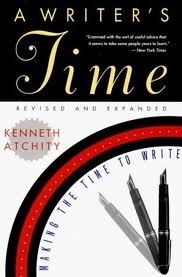
I woke at 4:00 this morning, and went to work. I broke for one hour to have breakfast and dress, then carried on until 1:00, pushing until I'd read/edited the outstanding pages. Soon I went back to work again, revising, making changes. It's going on 9:00 pm and I know I must stop.
Kenneth Atchitey wrote a wonderfully practical book on writing titled The Writer's Time: Making the Time to Write. It was one of the first books I read on writing, and I heed his lessons still.
Today I was remembering what he had to say about "End Time":
End Time is characterized by high energy flow and pressure to finish … Lock yourself up if necessary, turn off the phone, leave home, anything to allow End Time its way once you're sure its way can lead to the end. … The rule then is: If you're wondering whether you're experiencing End Time, you're not. True End Time displaces all other thoughts.
I'm forcing myself to call it a night, but I'll be back again early, I know, determined to finish this draft (the 6th), and send it off to my editor in a few days.
The really good news is that I'm pleased with it. The novel is starting to flower, and I like that. There will be changes, no doubt — I'm haunted by a suspicion that there are critical scenes missing. There will be drafts 7 and 8 to come, and perhaps even a 9th, but it's beginning to fill out, connect. As Robert Olen Butler would say, it thrumms.
Good night! It's time for me to thrumm to sleep.
March 22, 2012
Skyping, the hard but ultimately successful way
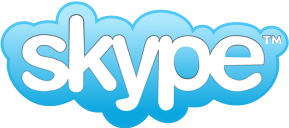
I just had a wonderful Skype chat with a book club in Chicago.
Earlier this evening, I'd tried to call our daughter (in Toronto) and my father (in California), bout both calls — on our Internet Vonage line — had been garbled.
I feared that that would be the case for the book club Skype chat, and lo, it was: they could see me, and I could sort of see them, but our voice communication was impossible.
Fall back plan: I called them, and we carried on that way, managing in spite of a still-somewhat-garbled telephone line, together with fuzzy Skype visuals.
In spite of all that, it was a wonderful chat! I love talking to book clubs!
What I learned: always have a telephone fall-back plan.
Have any of your had success with Skype chats? And when Skype is not connecting, how do you manage?
March 18, 2012
In memory of the ultimate writers' photographer: Jerry Bauer

{One of the author photos taken of me by Jerry Bauer, 1998, in the lobby of the Harbourfront Hotel, Toronto.}
On a writers' on-line chat group, I found out that writer photographer Jerry Bauer died almost two years ago. A number of us didn't know! Warm testimonials poured forth.
I assumed that when I Googled Jerry Bauer's name, a zillion links would come up — but this proved not to be the case. He's almost invisible. With considerable difficulty (compounded by the existence of other photographers with his name), I found the dates of his birth and death (in New York): May 8, 1934 – July 19, 2010. There was no notice that I could find, no obituary, only a blog post by author Neal Asher about having been contacted by a member of the family wishing a note to be read at Jerry's funeral.
A Google image search, of course, showed more: here.
His signature style was to work in black and white (usually), with natural light, and to take a candid photo.
He was so eccentric, he made me feel at ease. I became his buddy instantly. As the camera clicked, he chatted on and on, revealing intimate details regarding his health, problems his friends were having in Cuba, the challenges of his dual-life in Rome and New York.
I felt that because he had been sent a distance to photograph me (and by my German publisher, no less), I had somehow arrived. His portfolio, which he immediately showed me, confirmed that. It included one writerly luminary after another.
A few examples:
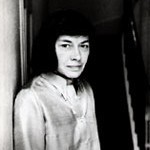

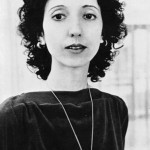
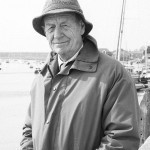
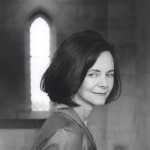
{Top to bottom: Patricia Highsmith, Samuel Beckett, Joyce Carol Oates, William Trevor, Geraldine Brooks.}
I remember being concerned about "my neck." (I was only 54. Little did I know about necks.) He said not to worry: "I'll take it out!"
RIP, Jerry Bauer, wherever you are. I am honoured to have been photographed by you.
March 17, 2012
An unusual request
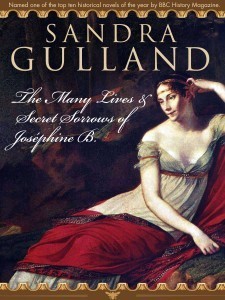
I mentioned in an earlier post that I'll soon have my Sandra Gulland Ink e-books up. In the words of a youngster I know, "Soon is a very long time." We are close — very close! — but for the concern that a few typos remain.
I proofed the files in France last summer, in the backseat of a car full of film crew, radio blaring. Not ideal!
Since then, Kris Waldherr, designer and tech wizz, read about half the chapters, and found typos. There are others, no doubt, and I'm on deadline revising This Bright Darkness: so no time to spare!
Here is the request. Are there any of you who 1) have an iPad, and 2) would be willing to read the new digital edition of The Many Lives & Secret Sorrows of Joséphine B.?
If so, I'd email you the file with instructions on how to get it into iBook. Then all you would have to do is read it, highlight whatever errors you find, and email them to me. (iBook makes this very easy.)
If you are interested, let me know! sgulland AT sandragulland DOT com
March 14, 2012
Mindstorm: on creativity
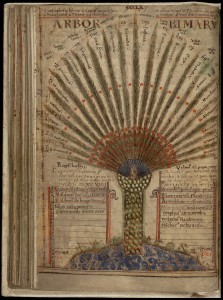
{From "Liber Floridus," a Medieval encyclopaedia, as seen on BibliOdyssey.}
Rob Kennedy in Australia recently asked if I would answer some questions about creativity for his blog, Mind Storm. I enjoyed the questions quite a lot. Here is what I answered:
Is there a stimulus you use to invoke creativity? E.g. music, yoga, wine, visual art.
Basically it's a matter of making a schedule and sticking to it. Be there, and the muse will show up. I use a Moleskin calendar to sign in, record the goal for the day, sign out. This is essential.
Silence helps: hence the use of headphones and/or ear plugs.
Informing the family: no interruptions (please). I have a number of "Do not disturb" signs to hang on doorknobs. I don't really need to use them. The act of declaring out loud seems sufficient.
There have been times — when suffering from creative fatigue — that I've listened to music (Willie & Lobo) to re-energize me.
I think the greatest stimulant to creativity is caffeine — but it only works if you've given it up.
My tools have to be in order! Computer, mouse, the perfect pencil (Pentel TwistErase o.9, extra soft lead).
I respond strongly to visuals. Three I keep by me at all times. The first one expresses, for me, the creative process, the immersion in the "unconscious."
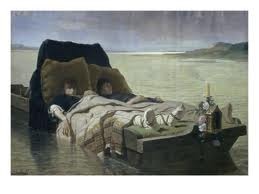
{ Evariste Luminais, "Les Énervés de Jumièges" 1880.}
The second image evokes the "work" of writing a novel, the way one moves chunks of text around, changing things constantly.
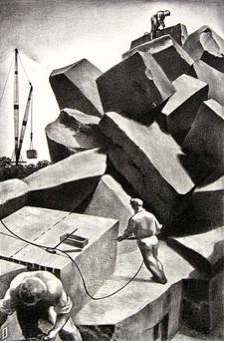
{"Granite for monuments (for future monuments), 1939," lithograph by Louis Lozowick .}
The third image evokes the sense of an enormous story brewing.
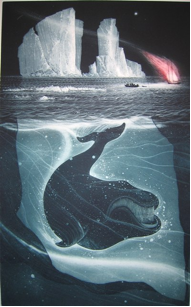
{David Blackwood, "Fire down on the Labrador, 1980″}
Are there particular times of the day or places where your creative levels increase?
First thing in the morning, in my office. Every day.
Are you more creative by yourself or with others?
By myself. I'm too easily distracted by others.
Is there a form of literature or an author that inspires creativity?
Any really wonderful literature — novel, short story, poem — inspires. I think reading great work is extremely important nourishment for a writer.
Is there something that stifles your creativity?
Poor health, lack of sleep, boring activities, lack of solitude.
Do you know why you are a creative person?
I think people have innate drives, and that a creative drive is one of them. Some are driven to be very physical, for example, some to be analytical, others to be creative . . . . I think I have a need to be creative. When I'm not expressing that "drive," I wilt.
A story: There was a time in my life, decades ago, when I was having a medical problem. I went to a number of doctors, a homeopathic doctor among them. He examined my eyes: "The problem is that you're not being creative." With a wry smile, I showed him the book I was reading: How to write a novel. I've been healthy ever since.
How would you answer some of these questions?
March 10, 2012
A curious surprise
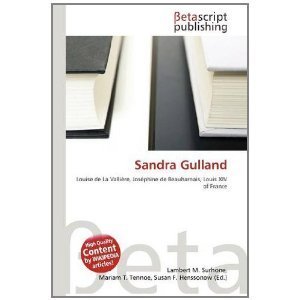
I was surprised some time ago to discover that a study guide had been published for the Josephine B. Trilogy, but this morning I had an even bigger surprise: a print-on-demand book has been published about me.
It's available for order on Amazon.ca and Barnes & Noble, and several used bookstores on AbeBooks.com show multiple copies available. (Why?!)
The 120-page book is apparently a compilation of material already available on Wikipedia.
I'm curious to read it (!), but I'm unwilling to pay the hefty price. At over $50 — used at $57! — I'm just going to have to suffer.

Update: Greg Ioannou, editor and FaceBook friend, gave me at link to an article about this publisher: The odd tale of Alphascript Publishing and Betascript Publishing.
March 8, 2012
Introducing (again): Sandra Gulland INK
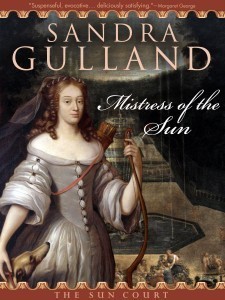
{One of the five covers designed by Kris Waldherr for Sandra Gulland Ink.}
I just posted the new covers for my e-book publishing imprint on my Facebook page. They're making quite a splash!
Come have a look: https://www.facebook.com/novelistSand...
Also, I've fixed up the new FaceBook page: I'm pleased. "Like" it!
But the thing that pleases me the most is that this afternoon I printed out all 409 pages of Draft 6.1 of This Bright Darkness. Next step: read it through with pencil in hand. I'm hoping that draft 6.2 will be the one to go to my editor at HarperCollins. My aim is to send it off before the end of this month.
Meanwhile, we've house guests coming for a week and I have quite a bit to do to get Sandra Gulland Ink ready to launch in April. It's a lot, but it feels possible. (Just.)
For more on Sandra Gulland Ink: click here. There is something about being an entrepreneur I find thrilling. It reminds me of my lemonade ventures as a kid — on a dead-end road, however! Let's hope this venture is more fruitful.

